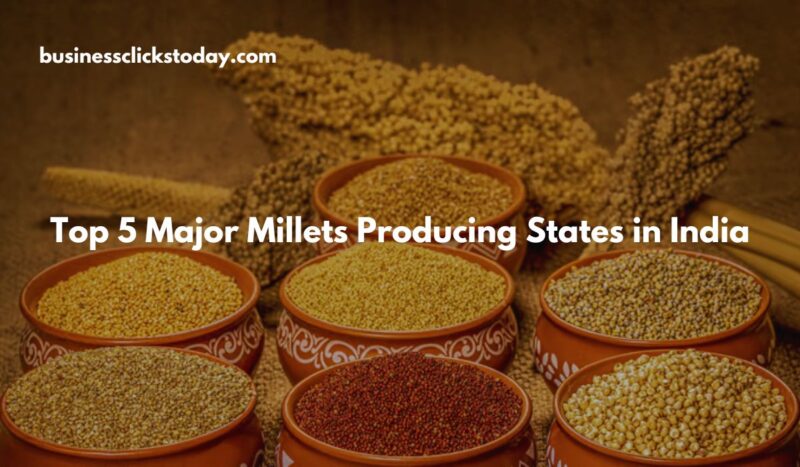Millet is a staple grain consumed widely across Asia and Africa, feeding approximately 1.2 billion people. Known for its resilience and nutritional benefits, millet plays a crucial role in the diet of many developing countries. India stands as the largest consumer of millet globally, with the country contributing an impressive 30.9 million tonnes to the worldwide production of this vital grain. As the demand for millet rises, driven by its failure-resistant characteristics and government incentives, India continues to lead the way in millet production. This article explores the major millets producing states in India, highlighting their contributions to the nation’s millet output.
1. Rajasthan
Rajasthan emerges as a leading contributor to India’s millet production, accounting for 27 percent of the nation’s total output. Despite its arid climate, Rajasthan’s farmers exhibit remarkable adaptability, cultivating a diverse range of millets, including Bajra (Pearl Millet). The state’s commitment to millet farming is evident across its vast Thar Desert fields and the fertile plains of Mewar. This dedication not only supports nutritional needs but also promotes sustainable agricultural practices. Rajasthan’s significant role in millet production justifies its status as the Millet Master of India, showcasing its crucial contribution to the major millets producing states in India.
2. Karnataka
Karnataka ranks as the second-largest millet-producing state in India, contributing 18 percent to the national millet output. The state has established a prominent millet brand known as Siridhanya, featuring varieties such as Ragi (Finger Millet), Navane (Foxtail Millet), Same (Little Millet), and Haruka (Kodo Millet). Millets are integral to Karnataka’s local cuisine, with regions like Koppal, Raichur, and Bellary being key contributors to millet cultivation. The Karnataka government actively supports millet farming through various initiatives, ensuring that this vital crop continues to thrive within the state. Karnataka’s significant contribution underscores its role among the major millets producing states in India.
3. Maharashtra
Maharashtra contributes 14 percent to India’s overall millet production. The state cultivates a variety of millets, including Nachani (a type of Finger Millet) and Plum Millet, which are used to make popular local dishes such as Bhakri. Prominent millet-producing areas in Maharashtra include Sangli, Yavatmal, and Jalgaon. Government initiatives like the Rashtriya Krishi Vikas Yojana (RKVY) support millet farmers, enhancing their ability to grow these hardy crops in dry or rain-fed conditions. Maharashtra’s diverse and extensive millet production reinforces its position as a key player among the major millets producing states in India.
4. Uttar Pradesh
Uttar Pradesh contributes 12 percent to the national millet production and actively promotes millet cultivation within the state. While rice and wheat are the primary grains, millet remains a significant crop, thriving in the state’s varied climatic and soil conditions. Popular varieties such as Pearl Millet and Sorghum are well-suited to the low moisture environments of Uttar Pradesh. The state’s support for millet farming highlights its importance in the region’s agricultural landscape, positioning Uttar Pradesh as a notable contributor to the major millets producing states in India.
5. Madhya Pradesh
Madhya Pradesh, located in central India, contributes 6 percent to the country’s millet production. The state’s ample rainfall and favorable conditions make it ideal for millet cultivation. Key millet-growing regions include Dindori, Mandla, Umaria, Shahdol, Betul, and Chhindwara. Local consumption of millet is prevalent, integrating it into the daily diet of the state’s residents. Madhya Pradesh’s contribution to millet production highlights its role in sustaining the nation’s millet supply and reinforces its status among the major millets producing states in India.
In conclusion, the top five millet-producing states—Rajasthan, Karnataka, Maharashtra, Uttar Pradesh, and Madhya Pradesh—play a pivotal role in meeting India’s millet demands, both locally and internationally. Government schemes and support are crucial in promoting millet production, ensuring a stable and nutritious food source for the nation. As India continues to emphasize millet cultivation, these major millets producing states will remain central to the country’s agricultural success and food security.
















